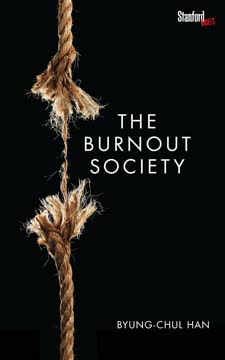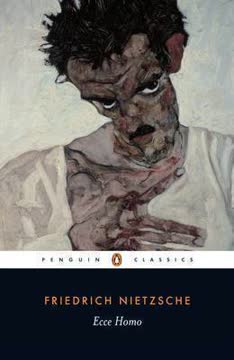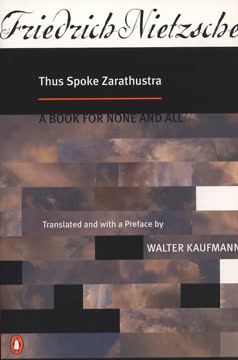Key Takeaways
1. Reality is "Less Than Nothing," requiring supplementation by fiction.
"moving" is the striving to reach the void, namely, "things move," there is something instead of nothing, not because reality is in excess in comparison with mere nothing, but because reality is less than nothing.
The paradox of existence. Žižek argues that reality doesn't exist despite nothingness, but because it is fundamentally "less than nothing." This means reality is inherently lacking, containing less energy or substance than a pure void. This deficit is the driving force behind movement and change.
Fiction fills the void. Because reality is "less than nothing," it cannot stand on its own. It requires supplementation by fiction to appear complete and consistent. This isn't just about storytelling; it's about the fundamental role of symbolic fictions in structuring our experience of the world.
Physical manifestation. This concept finds echoes in physics, like the hypothetical Higgs field. The appearance of this field lowers energy below the vacuum state, suggesting that "something appears out of nothing" because that something contains less energy than nothing.
2. Truth has the structure of fiction, revealed through distortion and showing.
What cannot be said, cannot be said.
Beyond factual truth. Traumatic truths, like the Holocaust, cannot be represented directly through factual description. Any attempt to do so neutralizes their impact. Instead, truth about trauma is often conveyed through factual unreliability, confusion, and inconsistency.
Showing vs. Saying. Following Wittgenstein, Žižek suggests that what cannot be said can be shown. The traumatic excess is inscribed into the very form of artistic representation, distorting it in a way that bears witness to the unspeakable reality. Examples include:
- Semprún's fragmented narrative in Le grand voyage.
- Schoenberg's atonal music reflecting totalitarian terror.
- The unreliability of survivor testimonies.
Reality of fiction. When direct truth is too traumatic, it can only be accepted in the guise of fiction. The pleasure of aesthetic fiction isn't escapism but a mechanism for coping with traumatic memory. The "reality of the fiction" becomes a way to access the truth that the "fiction of reality" conceals.
3. Plato's Parmenides reveals the power of nothingness and the logic of semblance.
If one is not, then nothing is.
Dialectical gymnastics. Plato's Parmenides explores the logical consequences of the existence and non-existence of "the One" and "the Others." Through a series of hypotheses, it demonstrates the inherent contradictions and inconsistencies that arise when trying to define these fundamental concepts.
The power of nothingness. The dialogue's conclusion, particularly the eighth hypothesis, suggests that if "the One is not," then "nothing is." This points towards a radical ontology where nothingness is not merely the absence of being, but a fundamental force or void underlying reality.
Semblance and the Real. The various hypotheses in Parmenides can be read as describing different "semblances" or appearances. Žižek, following Lacan, argues that semblance is not just an illusion opposed to reality, but a mask of nothingness that is constitutive of reality itself. The "truth" of the Platonic Idea is not a hidden reality, but "appearance as appearance."
4. The Hegelian Subject emerges from the void of self-relating negativity.
The subject for Hegel is … nothing but the active relationship to itself.
Beyond substance. Hegel's core insight is that the Absolute is not merely Substance (a self-contained, pre-existing totality), but also Subject. This means the Absolute is not a static ground, but a dynamic process of self-mediation and self-constitution.
Subject as negativity. The Hegelian Subject is not a positive entity but pure self-relating negativity. It emerges from the void, not by adding something to nothing, but by being the very movement of nothingness relating to itself. This is the "absolute power" of Understanding, which tears apart and differentiates.
Process, not underlying being. There is nothing underlying the subject's self-reference; there is only the self-reference itself. The subject is the process of becoming, not a stable entity undergoing change. This radical view distinguishes Hegel from earlier philosophies that posited a substantial self or soul.
5. Hegel's dialectic finds truth in inconsistency, not harmonious totality.
Hegel’s reproach to Kant is that he is too gentle with things: he locates antinomies in the limitation of our reason, instead of locating them in things themselves, that is, instead of conceiving reality‐in‐itself as cracked and antinomic.
Contradiction in reality. Contrary to the common view of Hegel as a philosopher of harmonious synthesis, his dialectic reveals inherent contradictions and inconsistencies within reality itself. Antinomies are not limitations of our knowledge, but features of the "thing itself."
Truth in failure. The Hegelian dialectical process demonstrates how every phenomenon or concept fails in its own way, implying a crack or antagonism at its heart. The "truth" of a phenomenon emerges through its self-destruction or failure to achieve its immediate goal.
Reconciliation with antagonism. Hegelian reconciliation is not the magical resolution of conflict, but a recognition of how antagonism is constitutive. It's a shift in perspective that sees the "rose in the cross of the present," accepting the inherent inconsistency of reality rather than seeking a false harmony.
6. Lacan repeats Hegel's insights through the lens of psychoanalysis.
The Holy Ghost is the entry of the signifier into the world. This is certainly what Freud brought us under the title of death drive.
Hegel and psychoanalysis. Lacan's work is presented as a repetition of Hegel, applying dialectical concepts to the field of psychoanalysis. Key parallels include:
- The subject as decentered and divided.
- The symbolic order as the "big Other."
- The death drive as absolute negativity.
Beyond psychological depth. Psychoanalysis, like Hegelian philosophy, moves beyond a purely psychological understanding of the subject. It deals with the subject as a structural position within the symbolic order, not as a substantial entity with inner depth.
Truth in fiction (again). Lacan's claim that "truth has the structure of fiction" echoes the Hegelian idea that truth is not a direct reflection of reality, but emerges through the symbolic order and its inherent inconsistencies. The analyst, like the Hegelian philosopher, helps the subject confront the truth of their desire, which is often structured like a narrative fiction.
7. The Symbolic Order is sustained by a constitutive lack (objet a).
The symbolic function presents itself as a twofold movement in the subject: man makes his own action into an object, but only to return its foundational place to it in due time.
Suture and the lack. The symbolic order, the "big Other," is not a complete or consistent totality. It is structured around a fundamental lack, which Lacan calls the objet petit a. This object is not a missing thing, but a stand-in for the lack itself, a "positivization of a lack."
Objet a as surplus. The objet a is the "indivisible remainder" of the signifying process, the excess that cannot be fully symbolized. It is the object-cause of desire and surplus-enjoyment, representing the point where form and content coincide in a paradoxical way.
Beyond the big Other. The ultimate goal of psychoanalysis is not identification with the big Other, but the recognition of the big Other's inconsistency and lack. The subject's own lack is correlated with the lack in the Other, leading to the possibility of "subjective destitution."
8. Sexual difference is a Real antagonism, not a binary opposition.
There is a non‐relationship.
Beyond binary logic. Lacan's formulae of sexuation demonstrate that sexual difference is not a simple binary opposition between two complementary sexes (masculine/feminine). Instead, it is a fundamental antagonism, a "Real" impasse that resists full symbolization.
Non-All. The feminine side is characterized by "non-All" (pas-tout), meaning the set of women is not totalized by a universal rule or exception, unlike the masculine side. This non-Allness is not a lack, but a different mode of being, one that is inconsistent and non-totalizable.
Antinomy of difference. Sexual difference is not the difference between the sexes, but a difference that cuts across the identity of each sex. It is a deadlock that can only be circumscribed through two different contradictions, highlighting the inherent inconsistency within both masculine and feminine positions.
9. The death of God reveals the undead drive and the political suspension of the ethical.
Where there is nothing, read that I love you.
God is unconscious. Žižek interprets the "death of God" not as the simple absence of a transcendent being, but as God becoming unconscious. God exists only insofar as he doesn't know his own inexistence. This leads to a radical atheism where God is the unconscious, the site of symbolic registration.
The undead drive. The death of God is correlated with the immortalization of the body, the rise of the "undead drive." This drive is not a striving for death, but an insistence that persists beyond biological life, a "something" that contains less energy than nothing.
Political suspension. The inexistence of the big Other (God) leads to the political suspension of the ethical. Without a transcendent guarantee, ethical decisions are grounded only in an abyssal political act. This act is not based on prior ethical norms, but creates the space for new ethical possibilities.
10. Emancipatory politics requires fidelity to the Event, beyond cynical wisdom.
The truth is, however, that to be something not deduced but purely self‐originating is precisely the conception of monarchy.
The Event as rupture. A Truth-Event is a radical rupture in the order of being, an intrusion of the Real that cannot be causally deduced from prior conditions. It is a moment of creation ex nihilo, where something genuinely new emerges.
Fidelity to the impossible. Emancipatory politics requires fidelity to such an Event, even when it appears impossible or irrational from the perspective of cynical common sense. This fidelity is not blind faith, but a commitment to a project that retroactively creates its own conditions of possibility.
Beyond cynical wisdom. Cynical wisdom, which sees through illusions but remains passive, is ultimately a form of self-deception. True political action requires courage to embrace the risk of the Event and transform anxiety into enthusiasm, actively shaping reality rather than merely observing its inconsistencies.
11. Quantum physics and other sciences reveal ontological incompleteness.
The Real is not out there, as the inaccessible transcendent X never reached by our representations; the Real is here, as the obstacle or impossibility which makes our representations flawed, inconsistent.
Beyond correlationism. Meillassoux's critique of correlationism highlights the problem of accounting for reality independent of human thought. However, Žižek argues that the Real is not a transcendent In-itself, but the very obstacle or inconsistency that makes our representations flawed.
Ontological incompleteness. Quantum physics, with its paradoxes like the double-slit experiment and the uncertainty principle, suggests that reality itself is ontologically incomplete or indeterminate. The lack we perceive is not just epistemological, but a feature of the Real itself.
The two vacuums. The concept of the Higgs field introduces the idea of two vacuums: a "false" vacuum that costs energy to maintain, and a "true" vacuum where energy is zero. This suggests that "something is cheaper than nothing," providing a materialist explanation for the emergence of being from a void.
12. The Subject is a void, correlated with the Real of inconsistency.
The subject is neither noumenal nor phenomenal, neither the I’s asubjective neuronal substratum nor my representation of myself.
Subject as void. The subject is not a substantial entity, but a void, a cut in the order of being. This void is not a lack of something, but pure self-relating negativity, the very ability to negate every determinate content.
Correlation with the Real. The subject is correlated with the Real, not as an external reality, but as the inconsistency or antagonism that thwarts the symbolic order from within. The subject is the point where the Real breaks through the symbolic.
Beyond representation. The subject is not simply a representation or a self-model. It is the elusive X to which representations appear, the "myself" that cannot be another appearance. This void is the condition for the distance between noumenal and phenomenal, between the brain and the self-model.
Last updated:
Review Summary
Less Than Nothing is a dense, challenging philosophical work that explores Hegel, Lacan, and other thinkers. Readers find it both frustrating and illuminating, praising Žižek's erudition and critique of capitalism while noting his repetitive style. Many consider it his masterpiece, offering a coherent presentation of his ideas. The book's difficulty and length (over 1000 pages) make it unsuitable for beginners, but those familiar with continental philosophy and psychoanalysis may find it rewarding. Some criticize Žižek's approach, while others appreciate his unique perspective on contemporary issues.
Similar Books
Download PDF
Download EPUB
.epub digital book format is ideal for reading ebooks on phones, tablets, and e-readers.



















